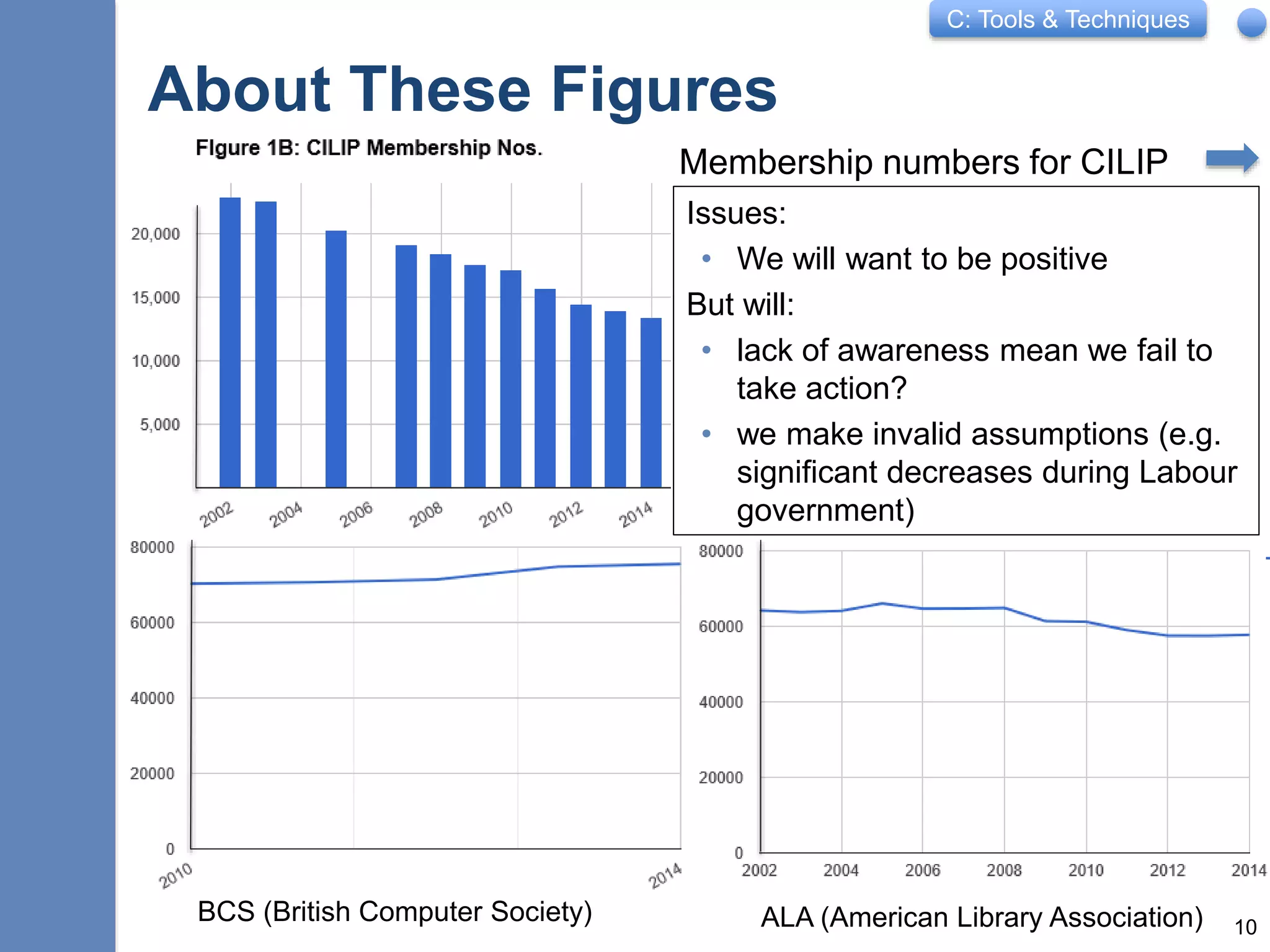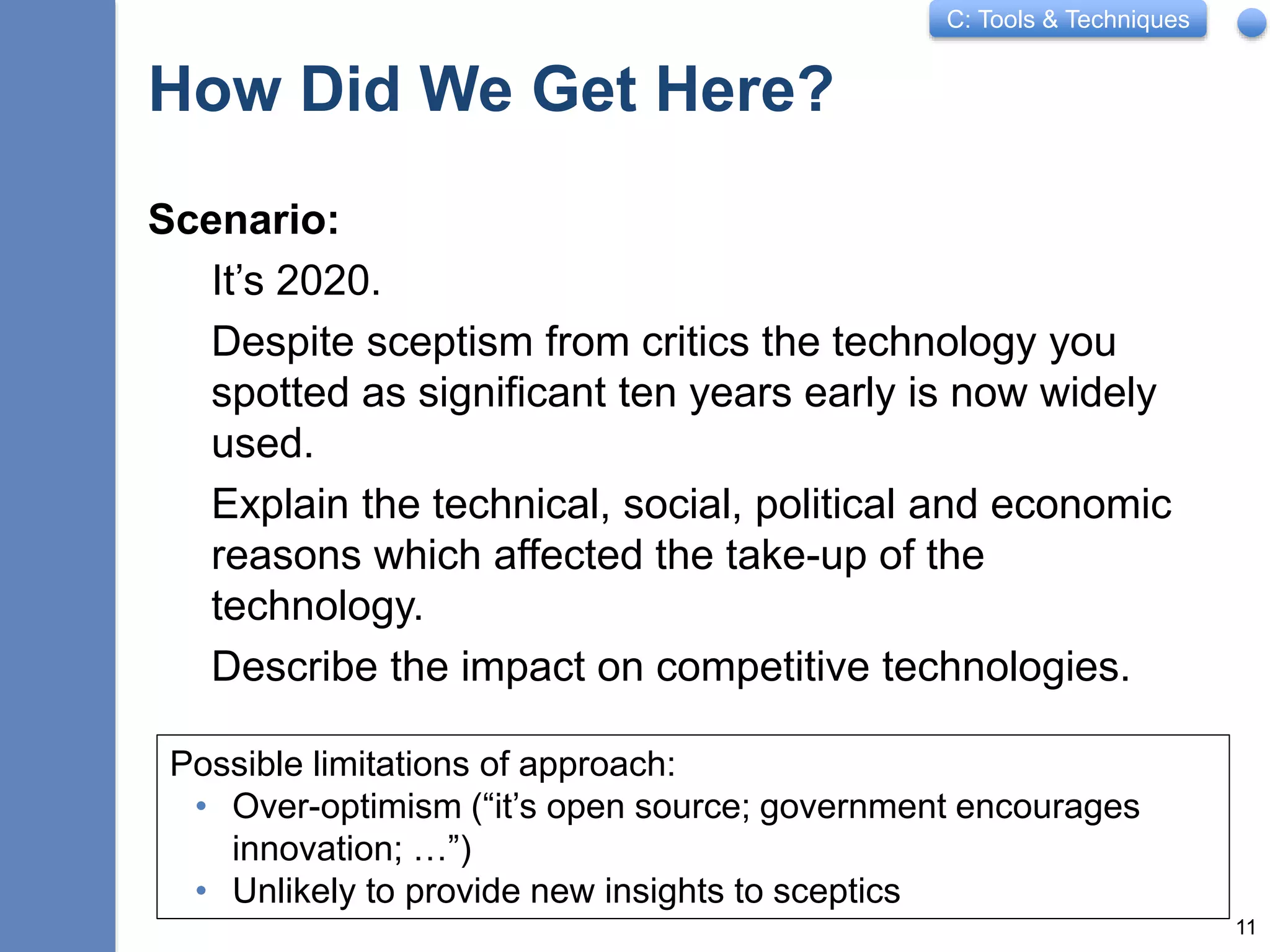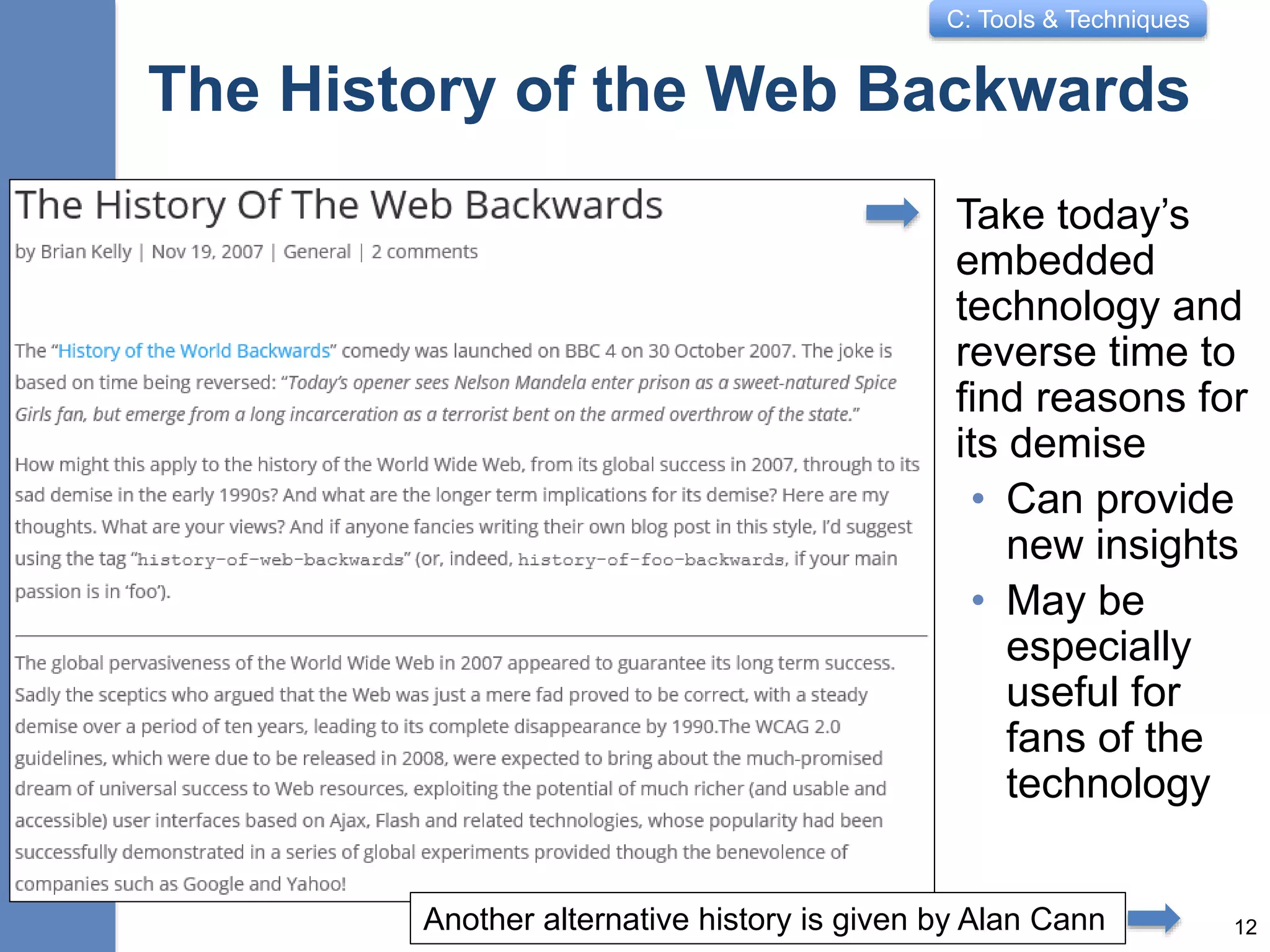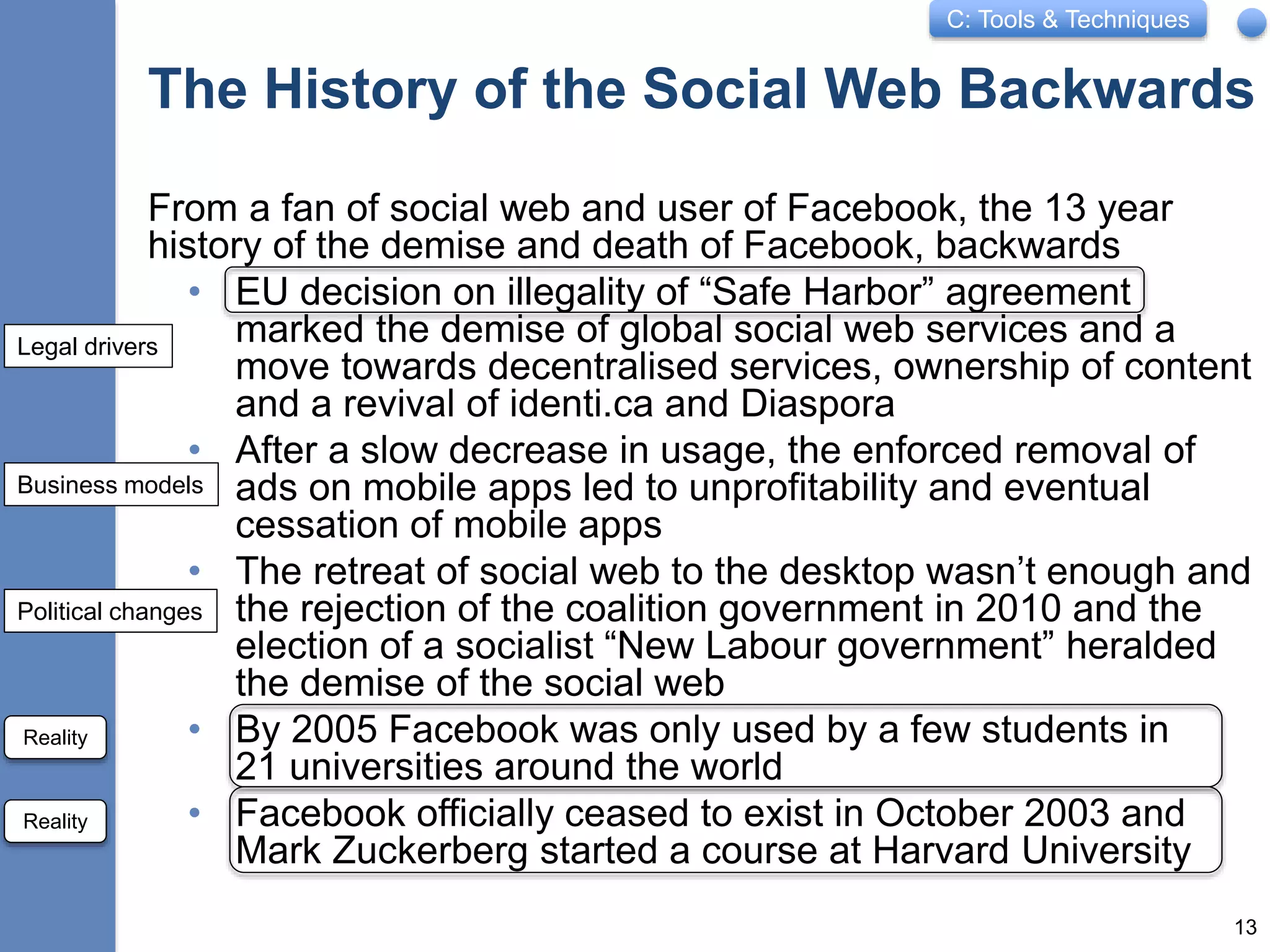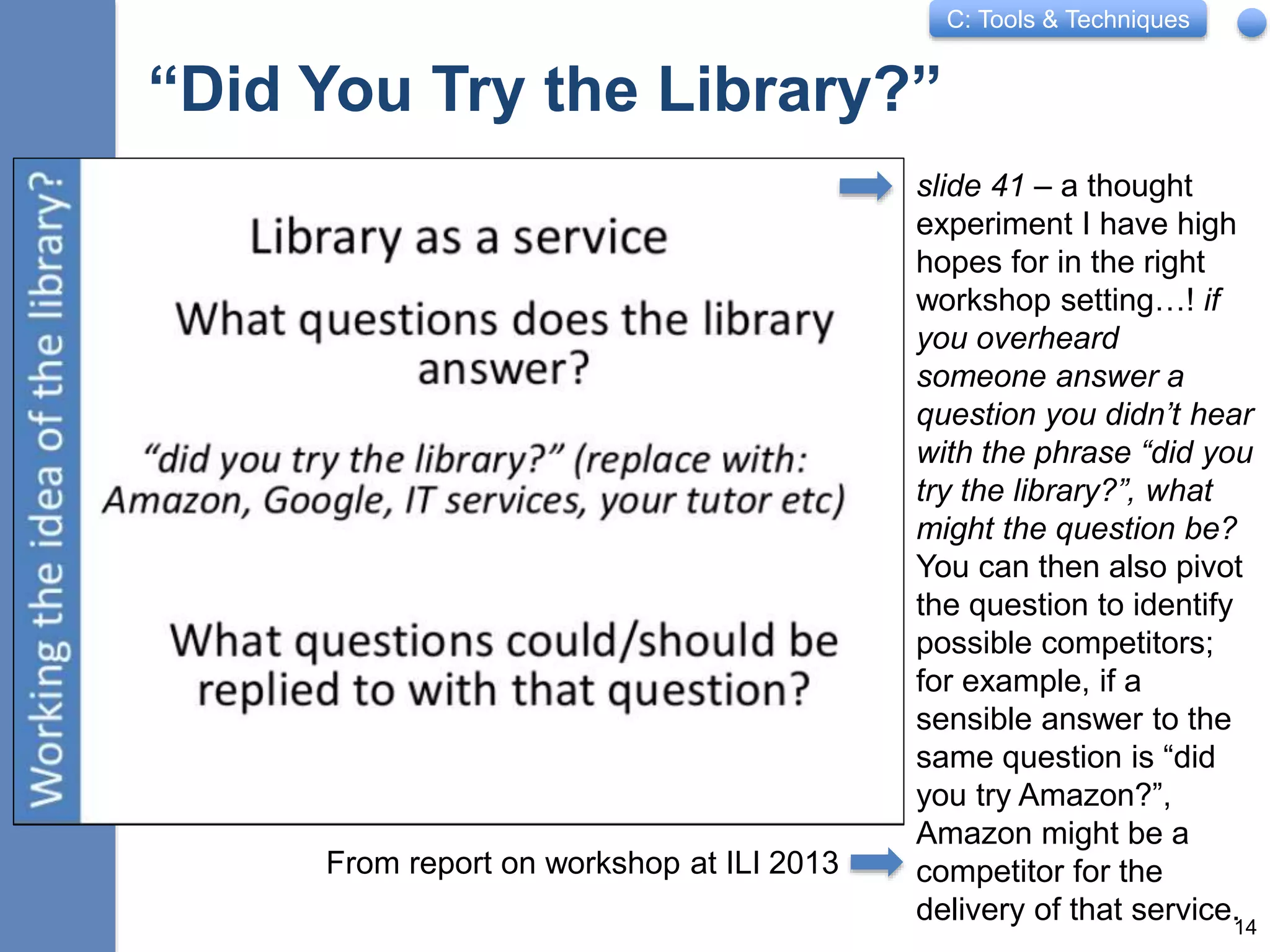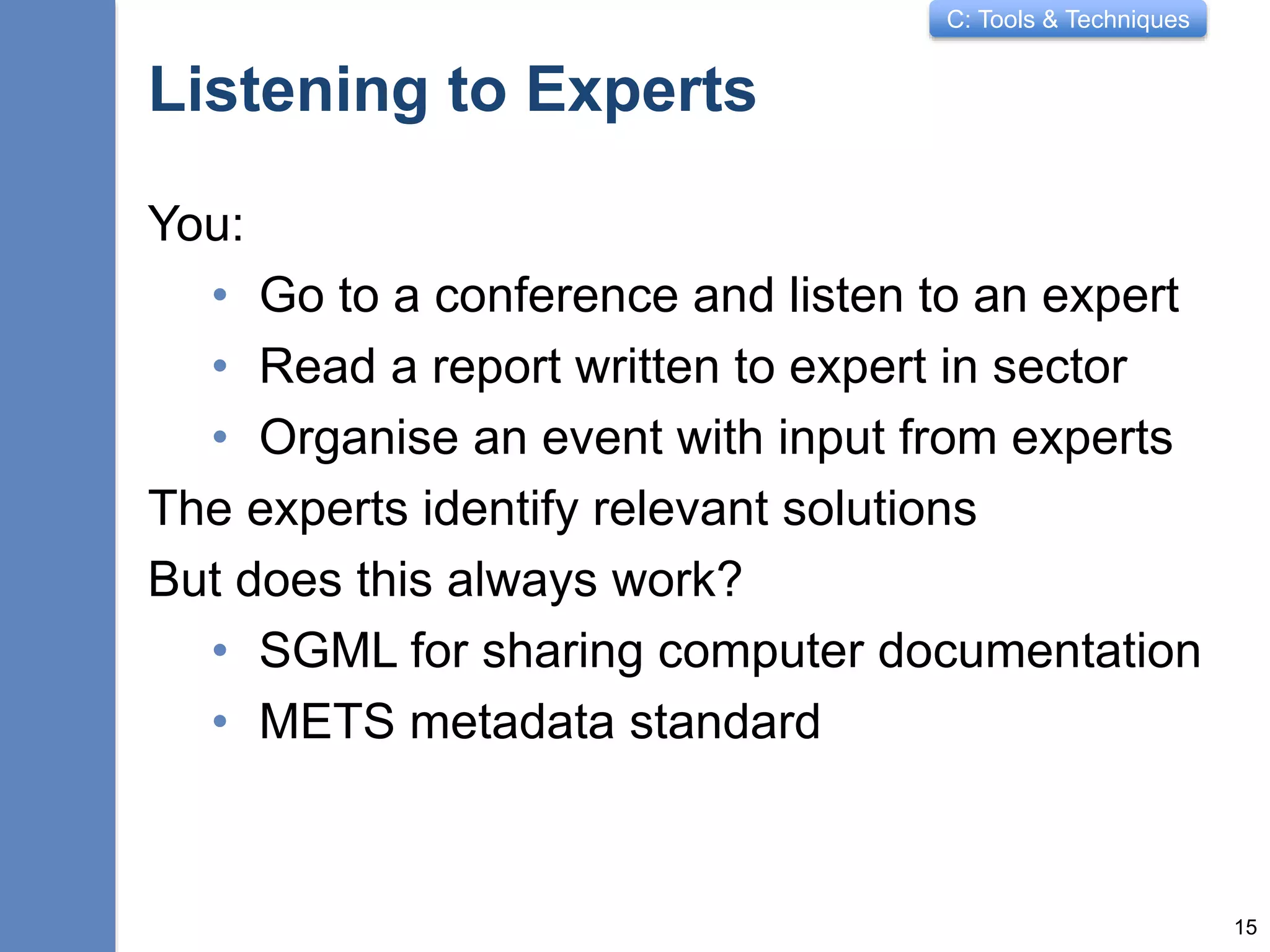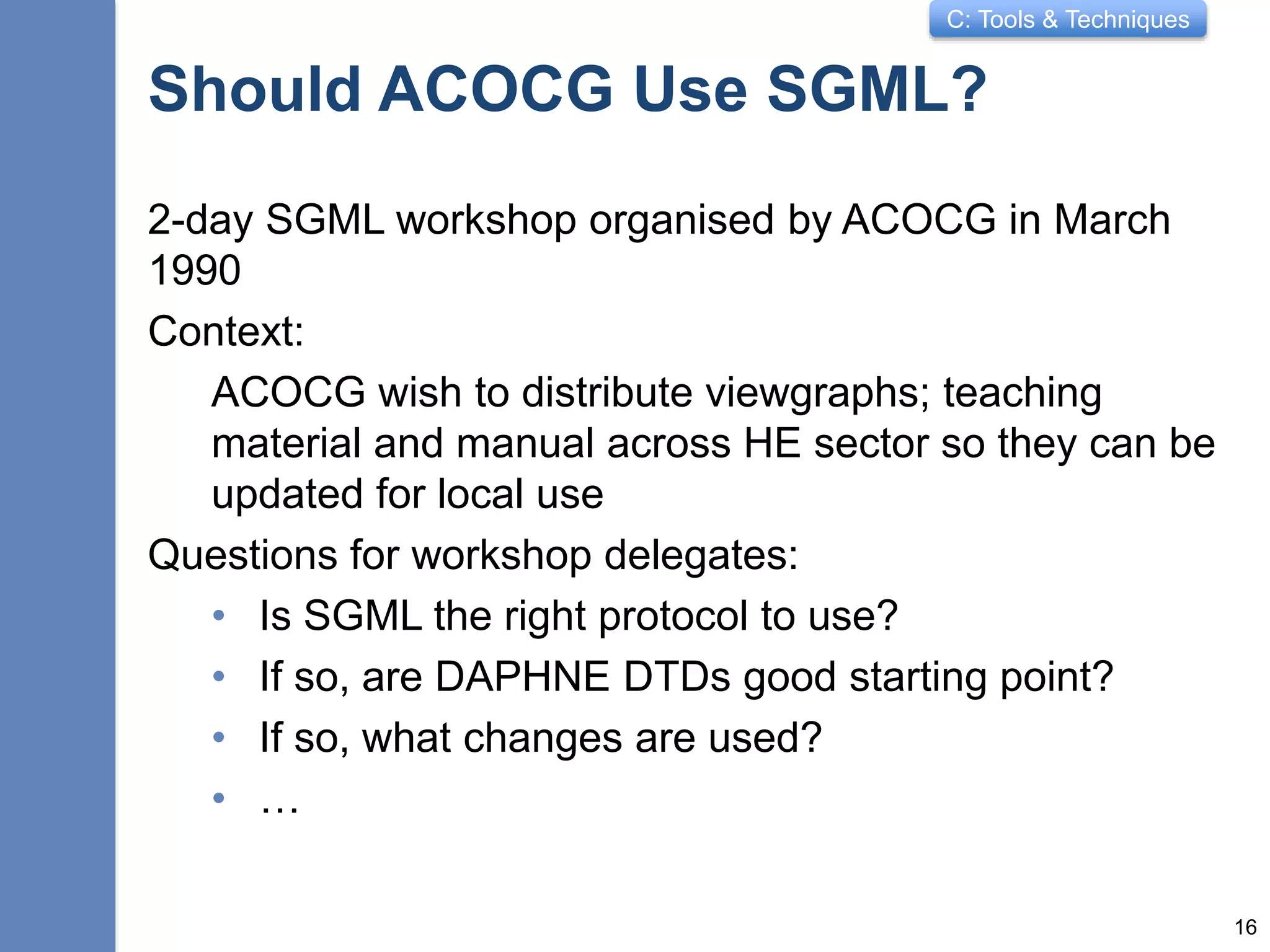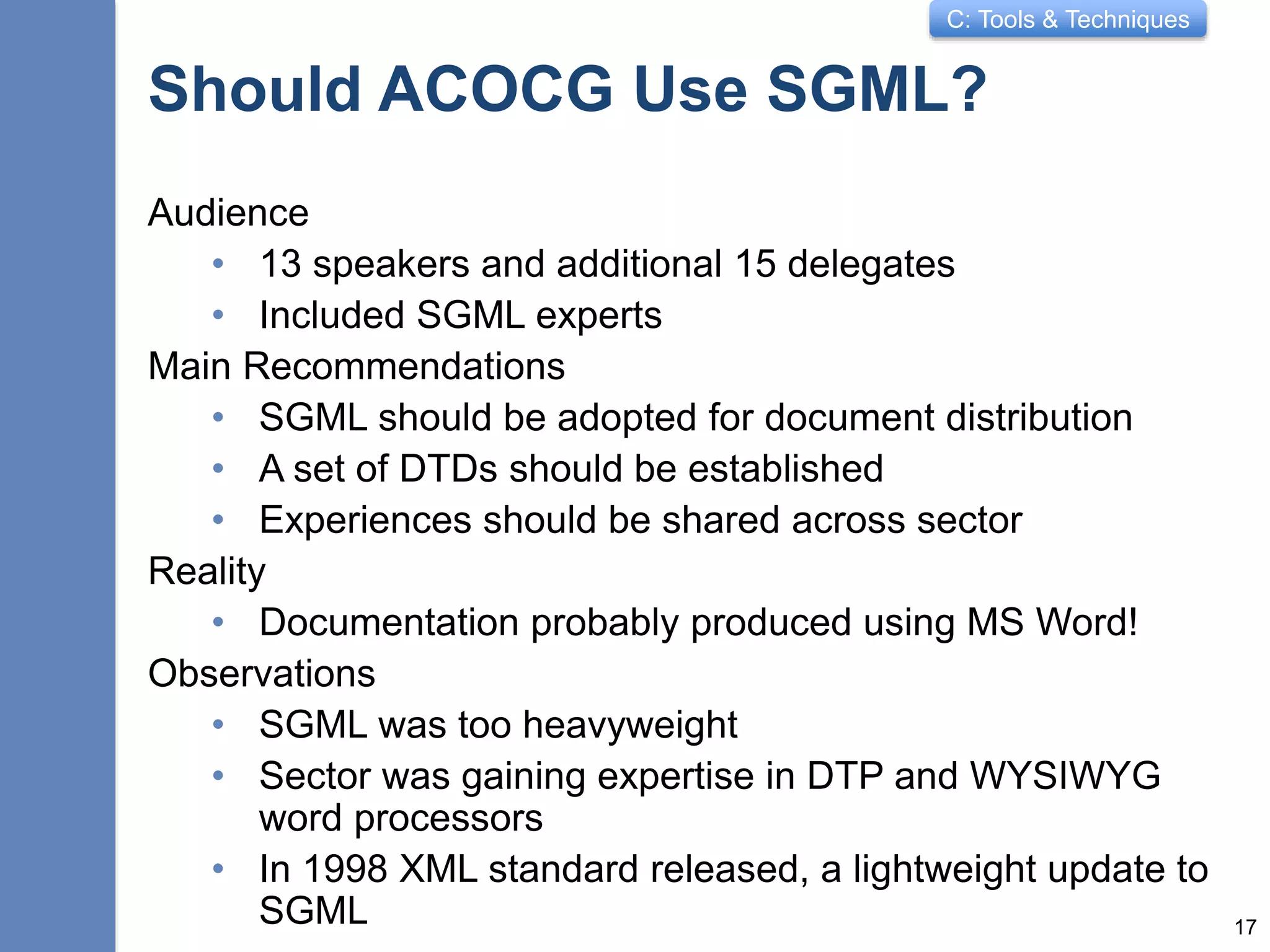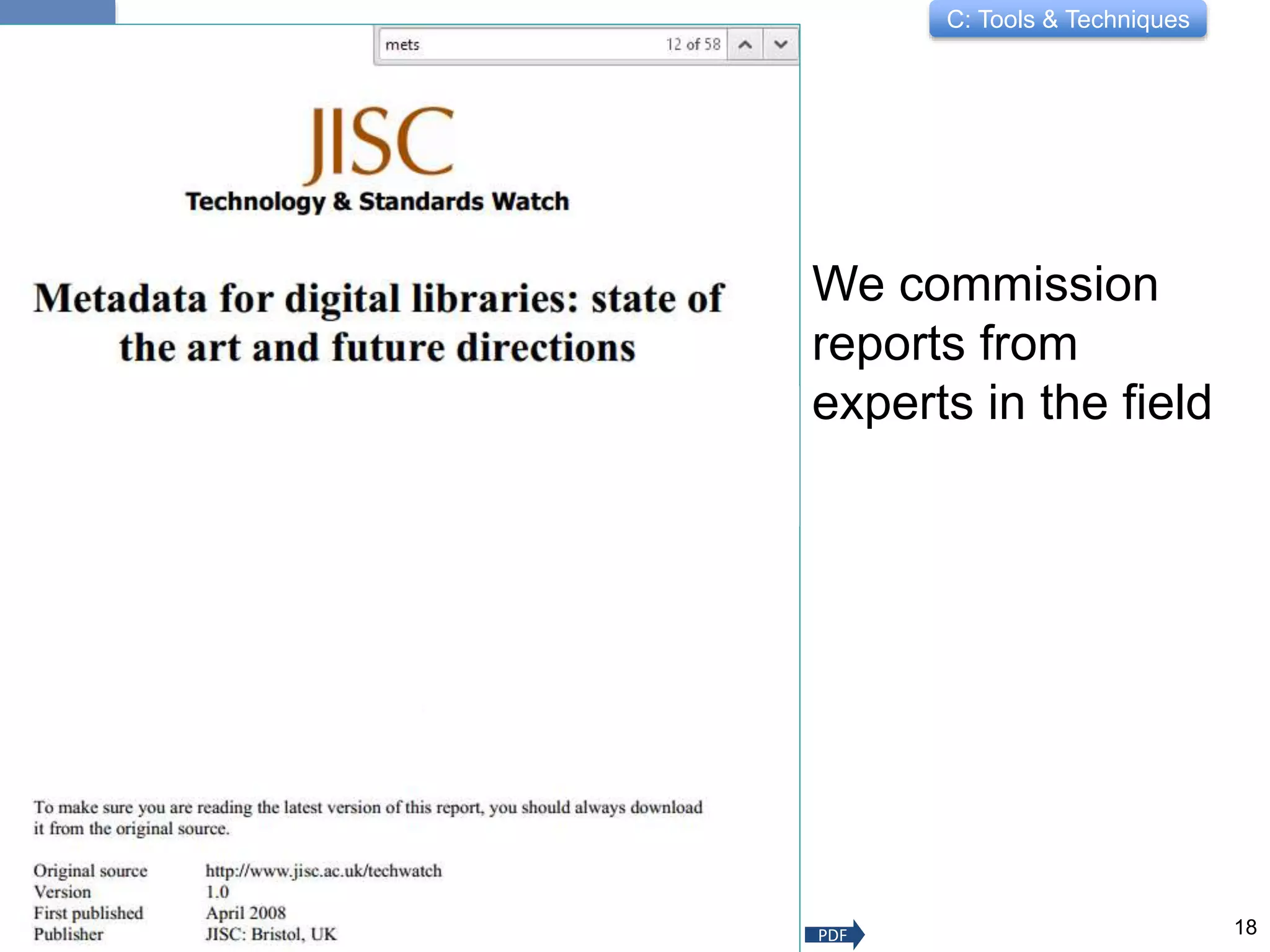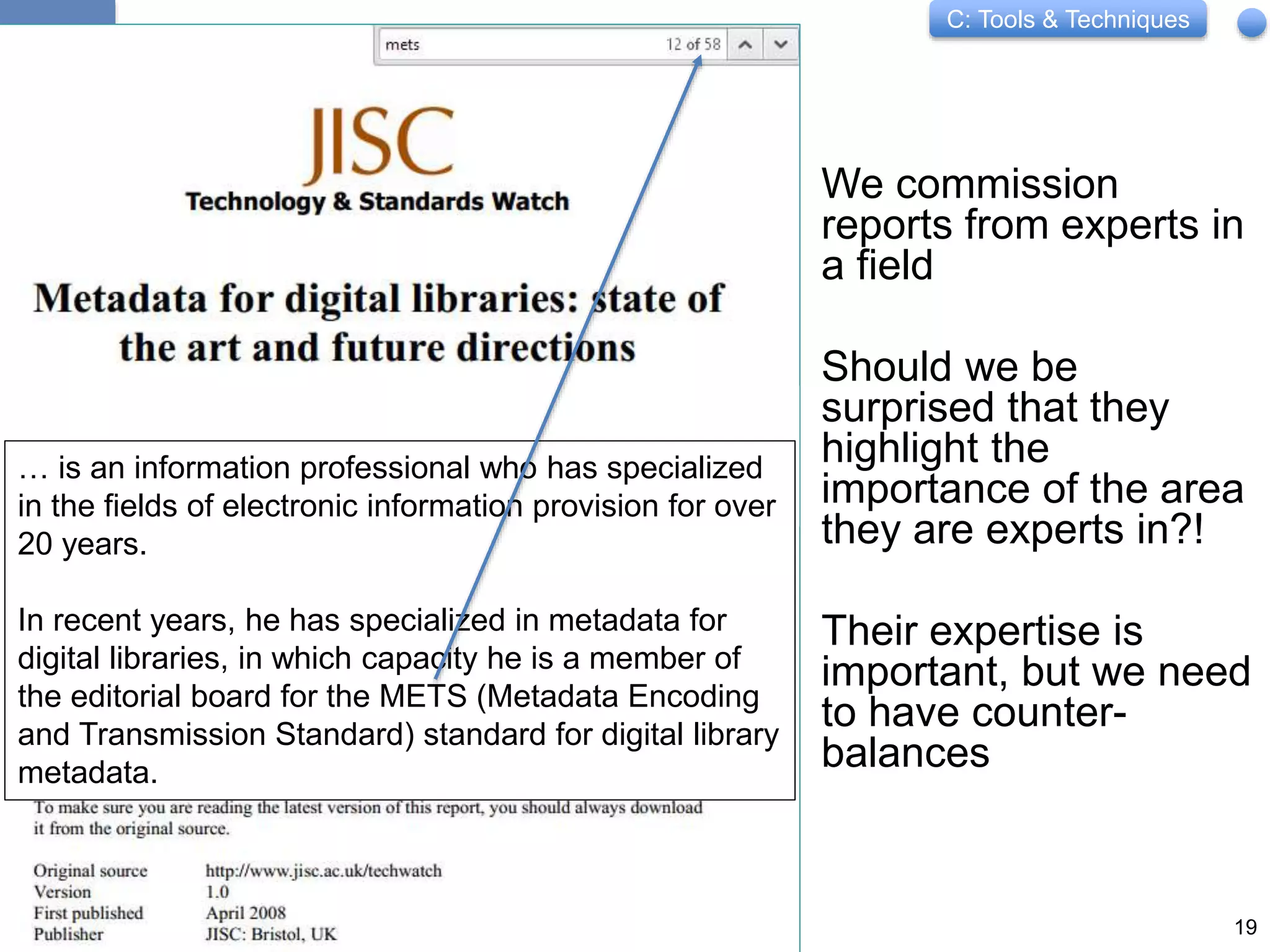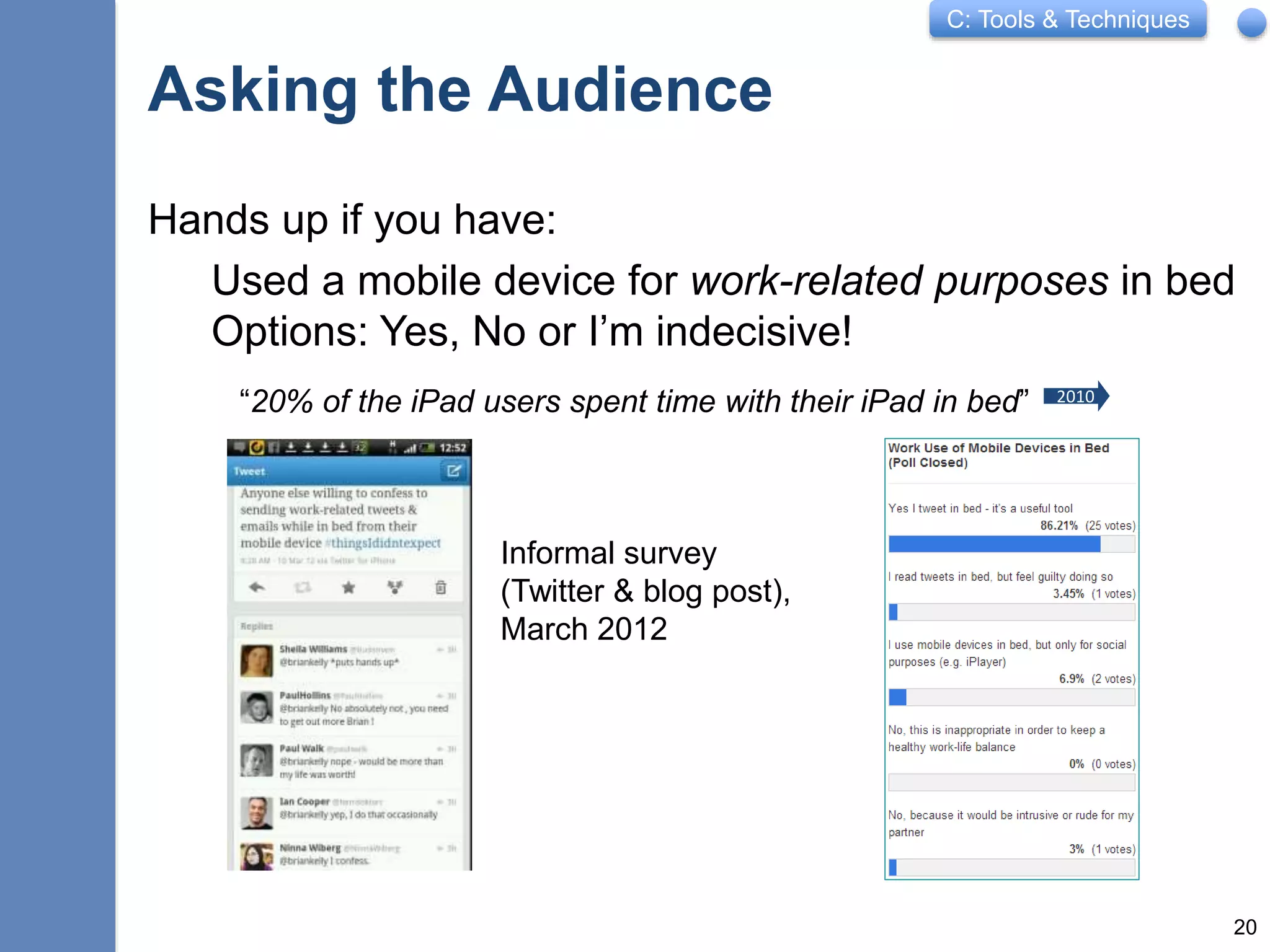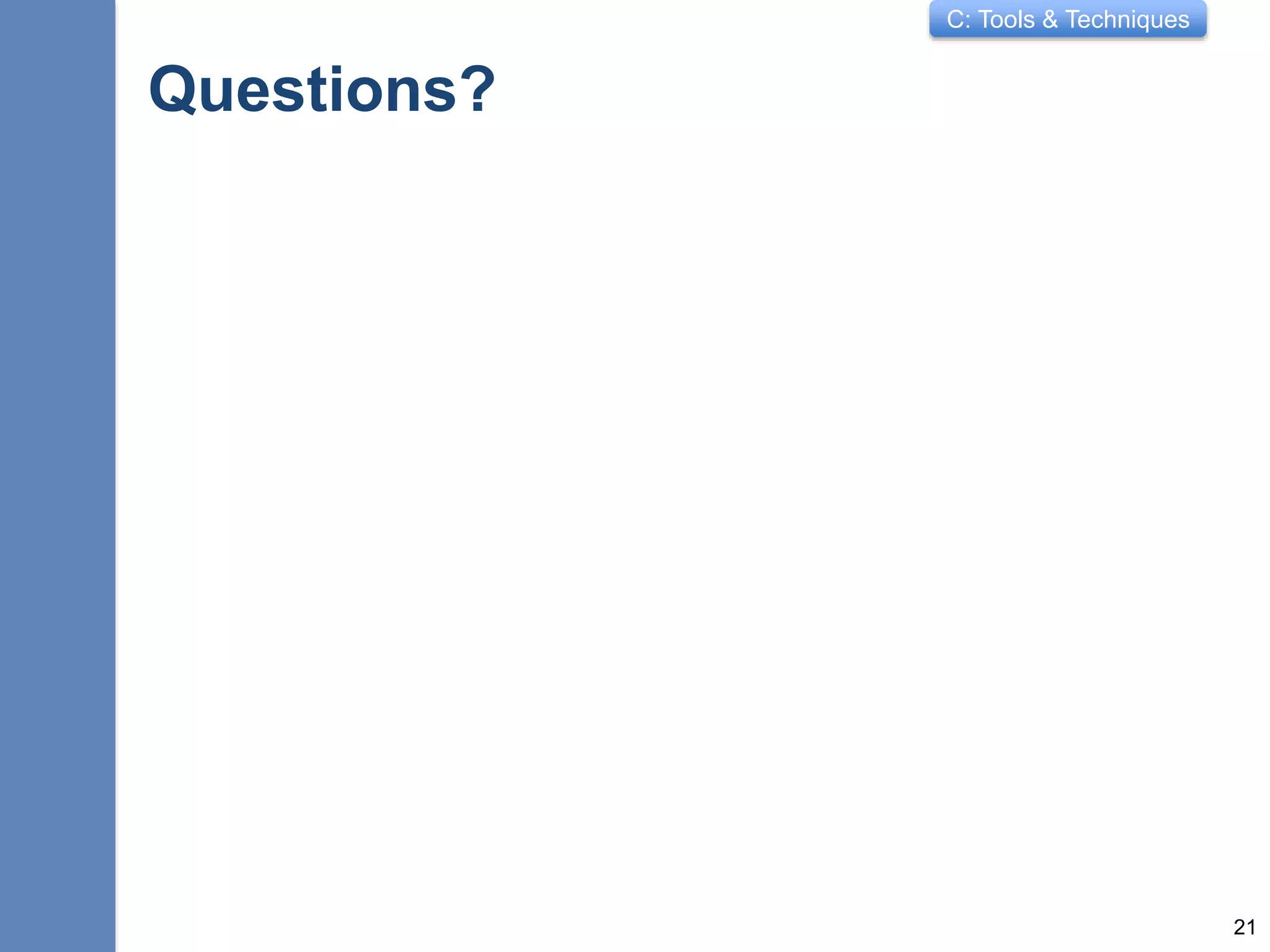The document outlines various tools and techniques for analyzing technological trends and impacts, focusing on mobile technology, search engines, and historical perspectives. It discusses methods for gathering insights, such as trend analysis, expert opinions, and audience engagement. Additionally, it raises questions about positive reporting on membership figures and the relevance of historical analysis in understanding current and future technology adoption.
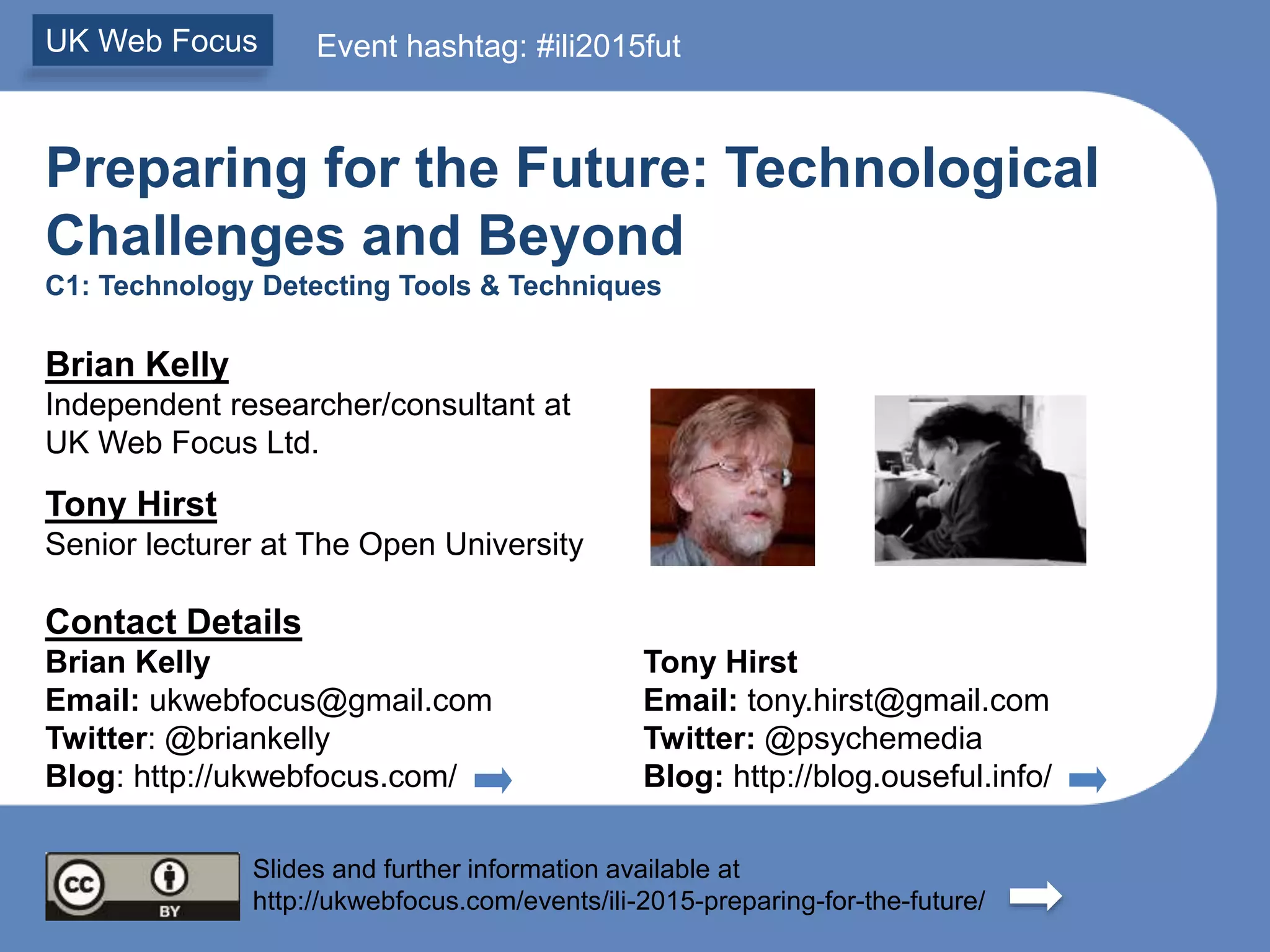
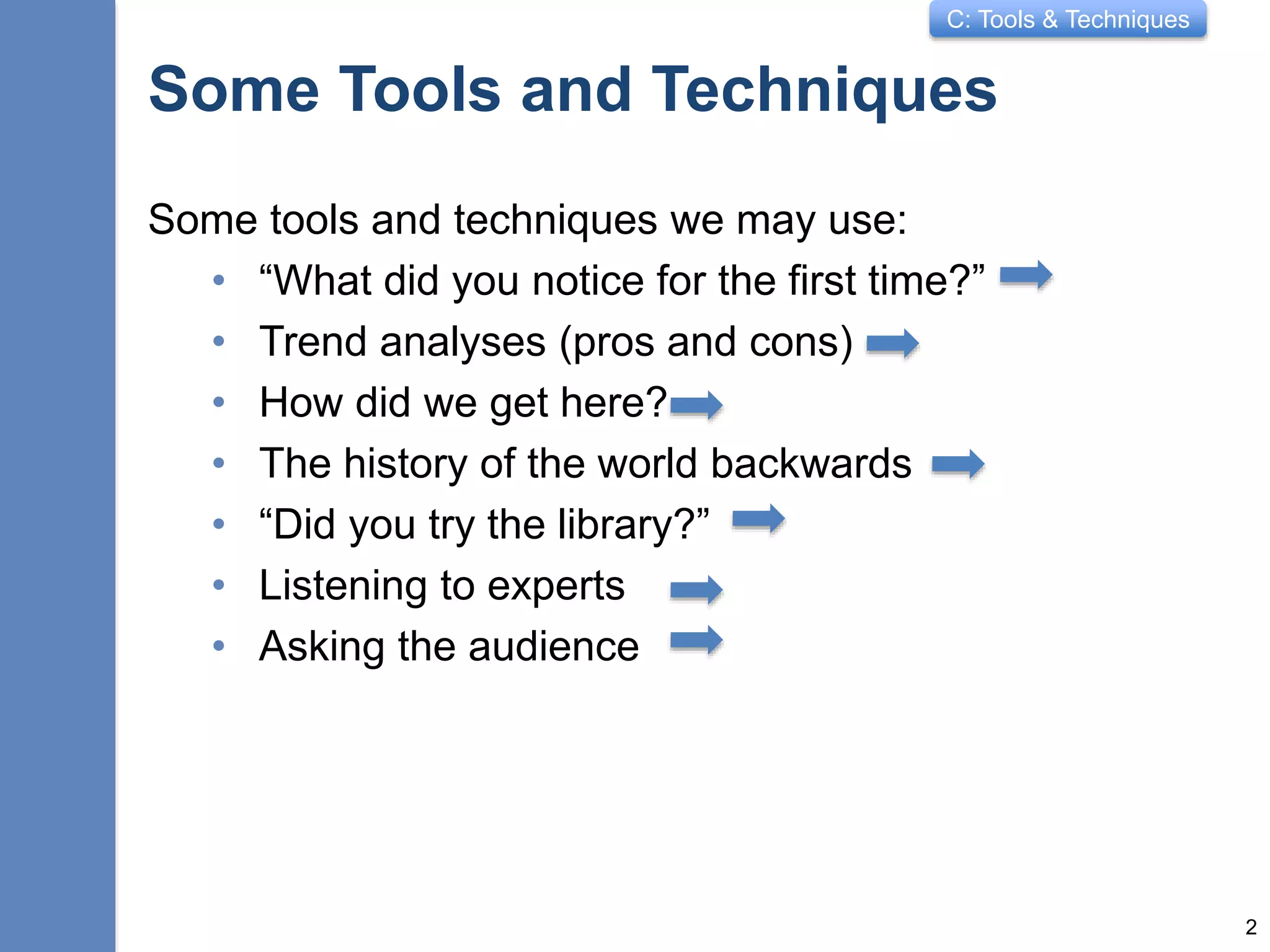
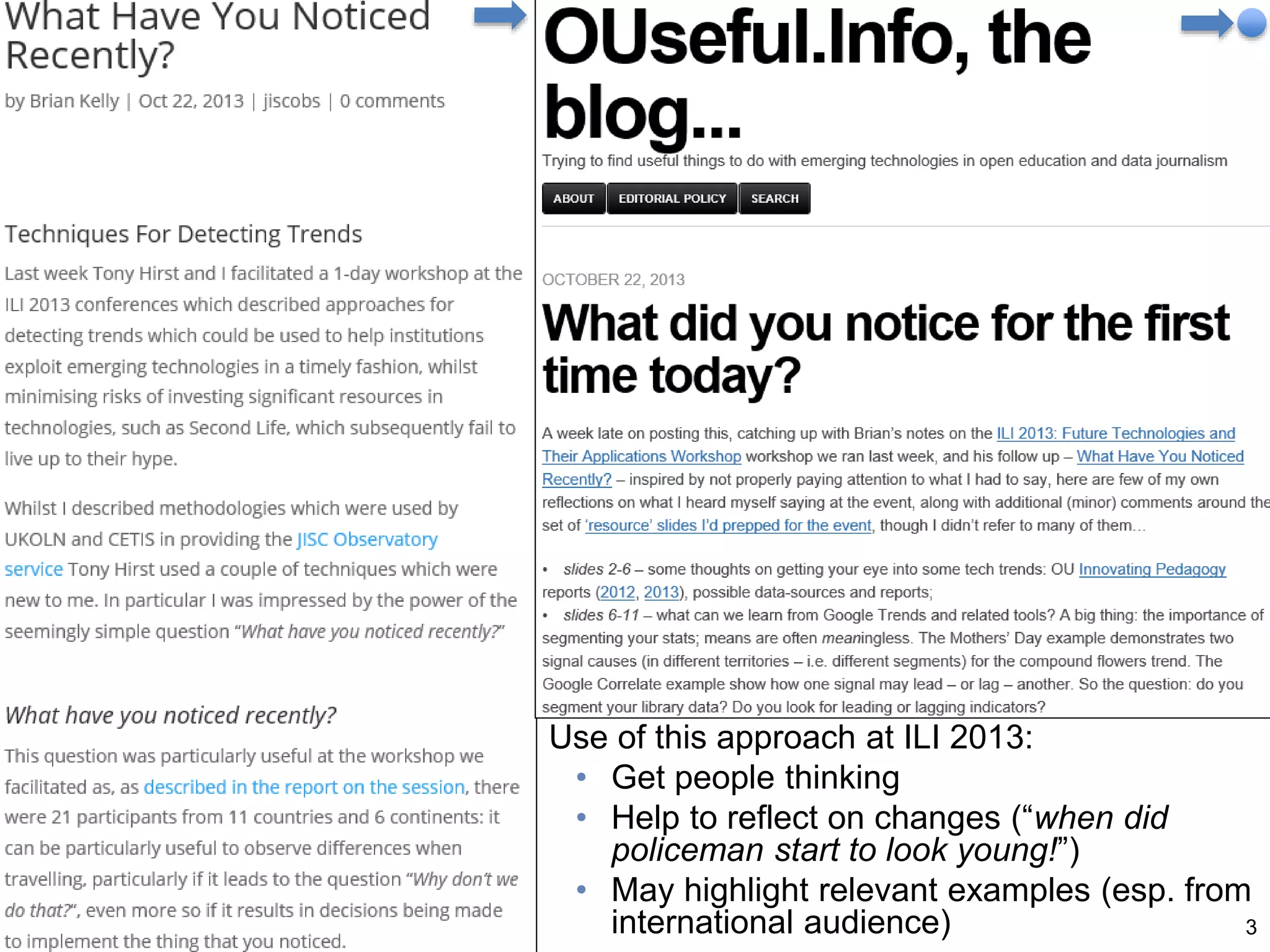
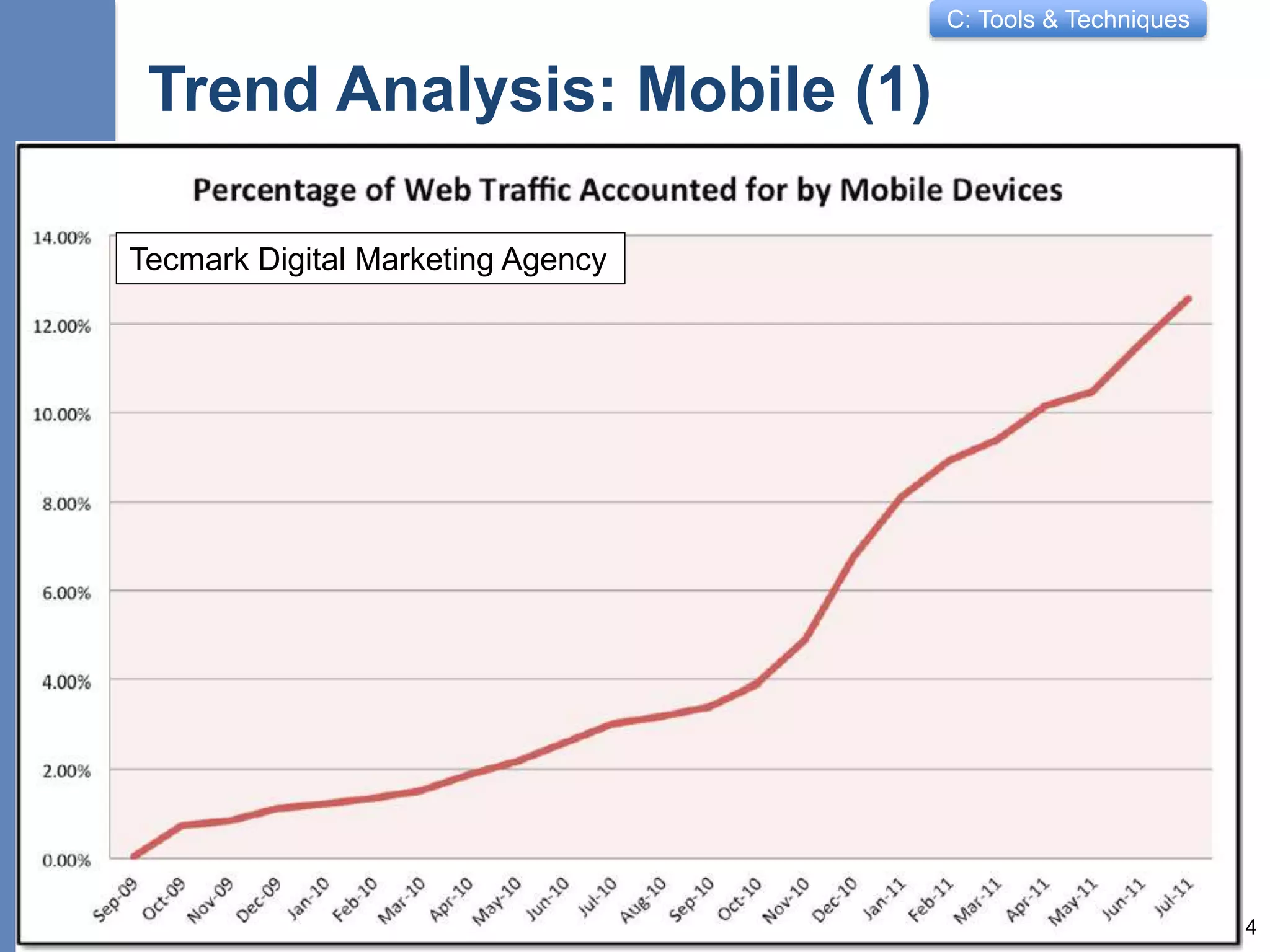
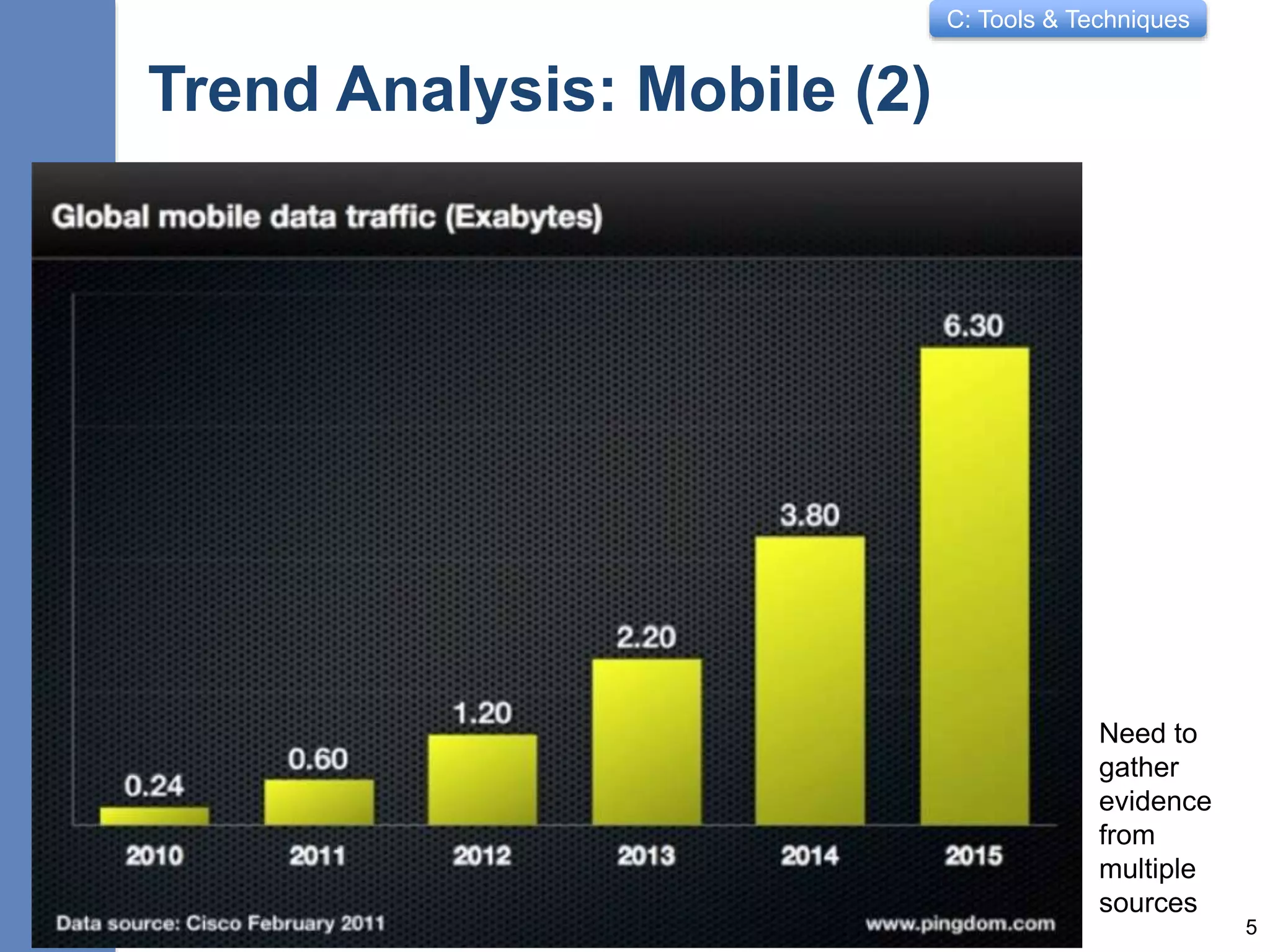
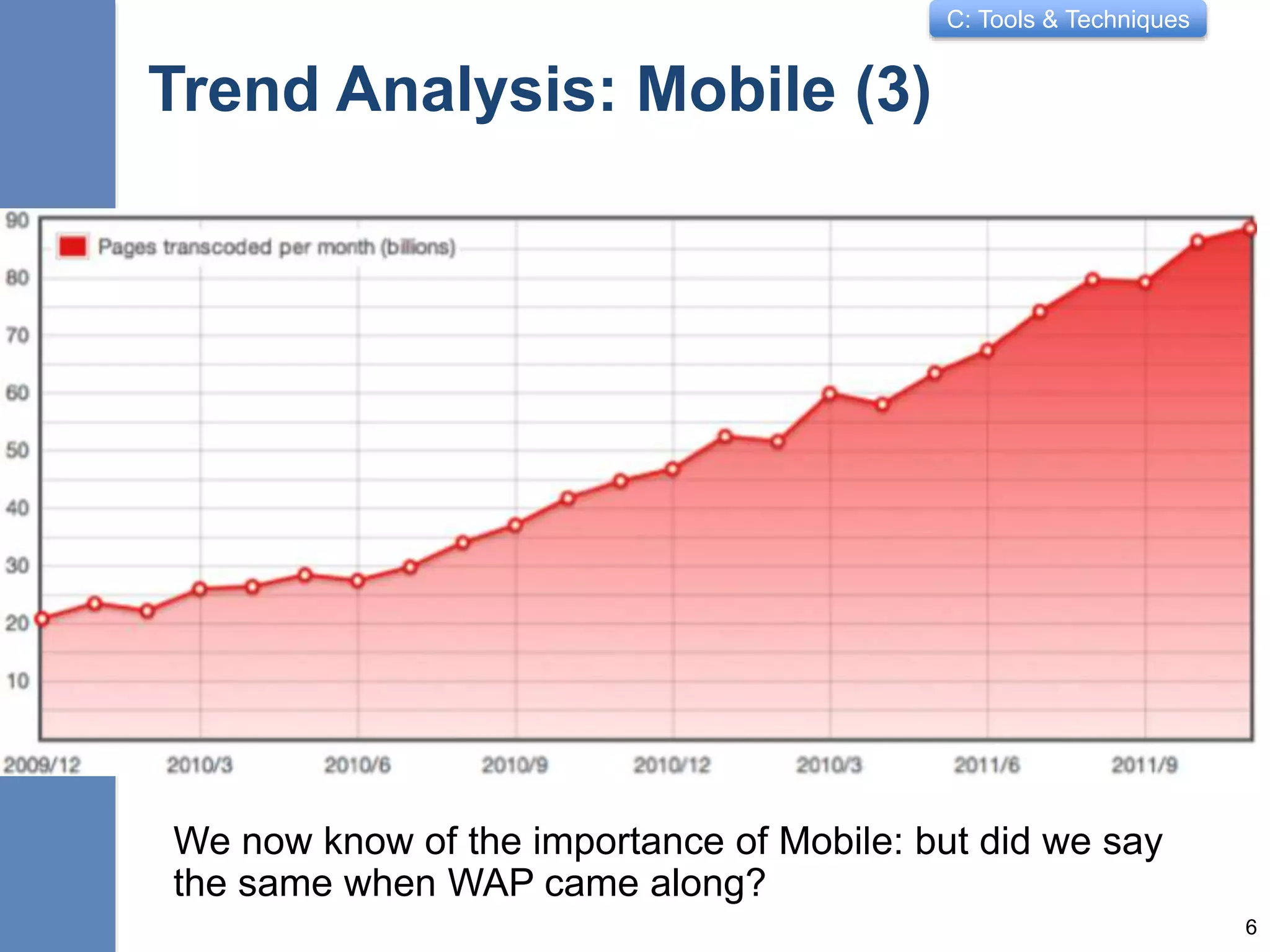
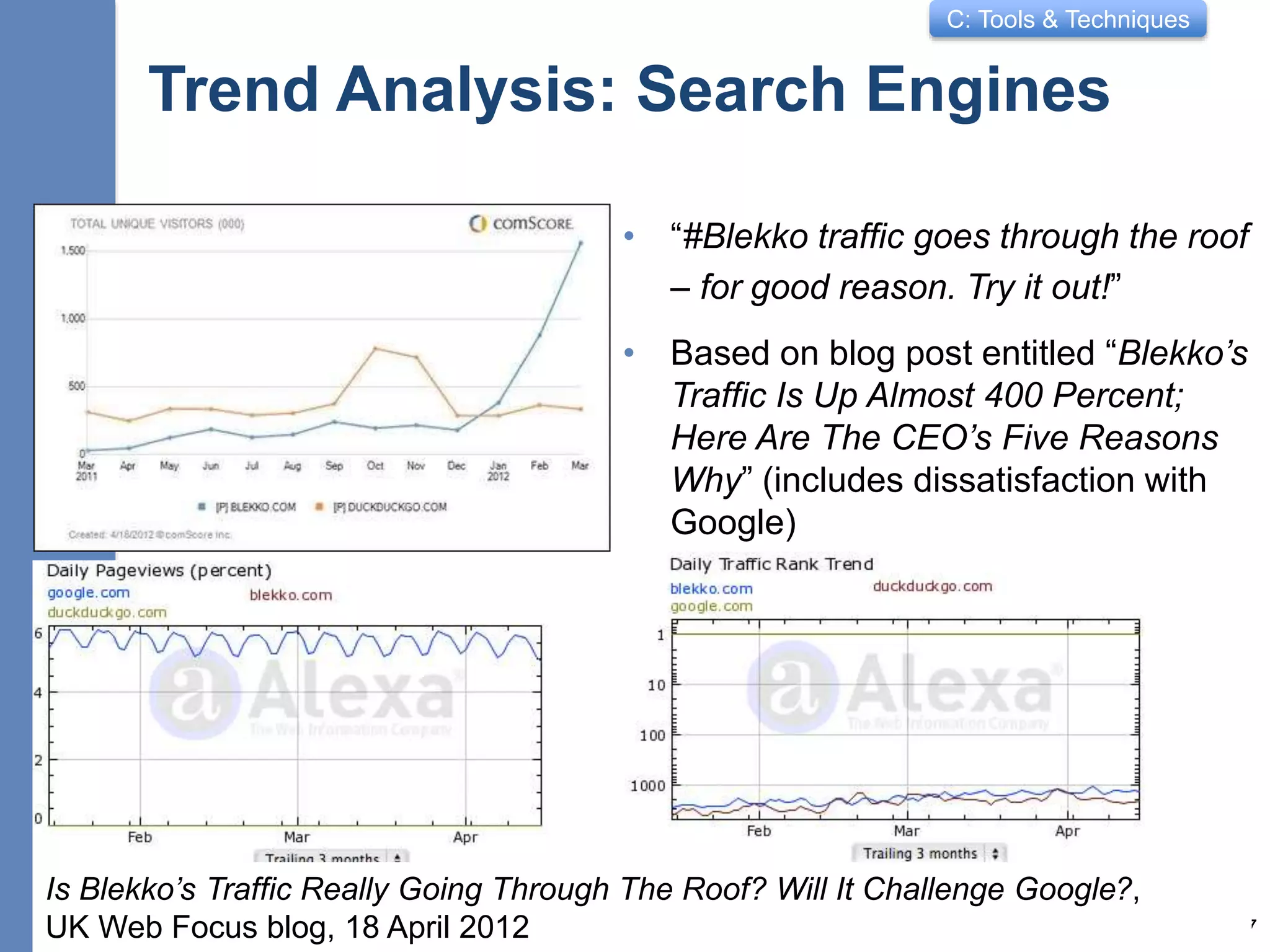
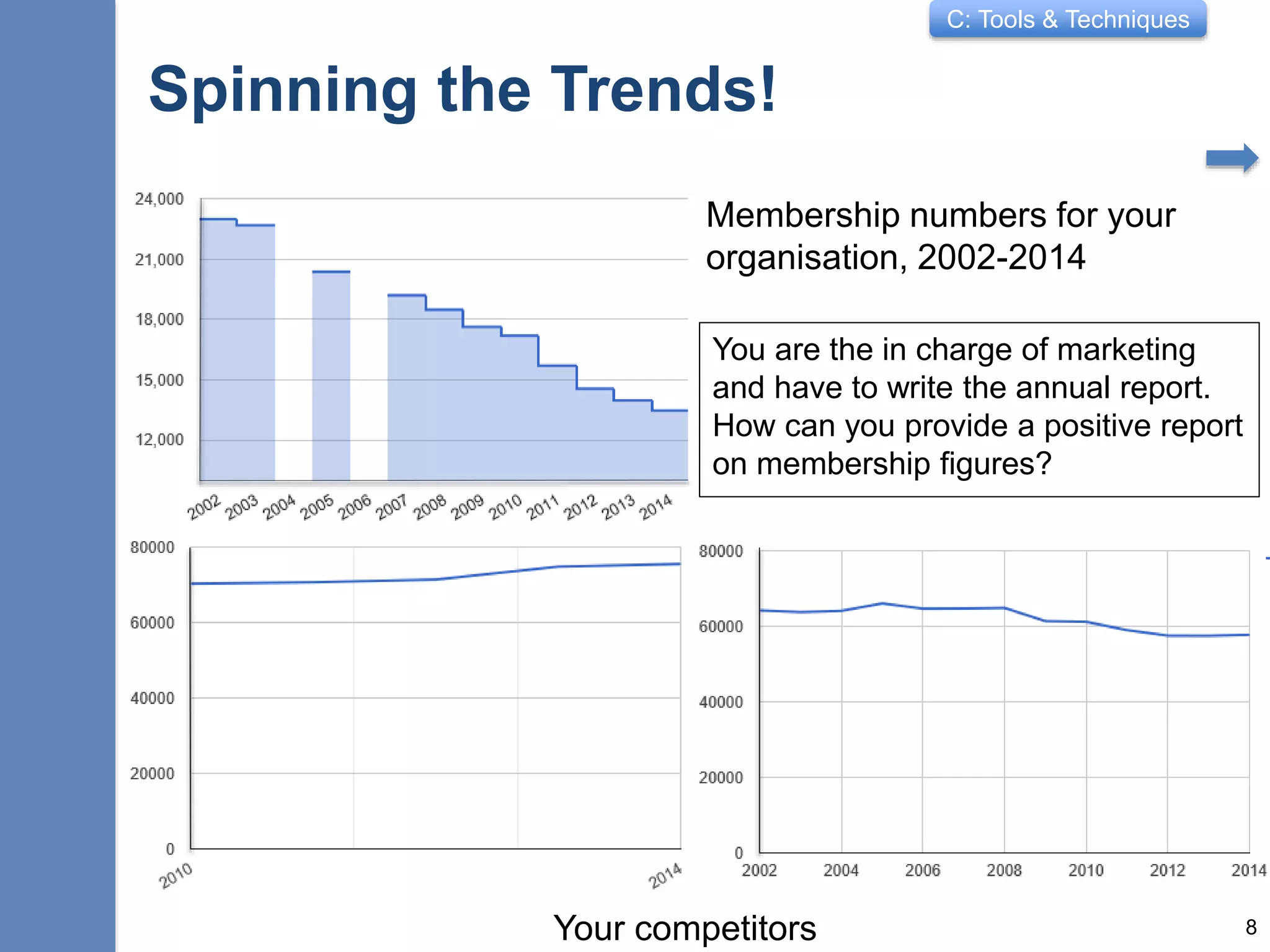
![C: Tools & Techniques
Spinning the Trends!
“Looking at the year
on year graph of
membership figure,
2013 definitely
shows signs of
improvement
compared with
previous years”
9
“xxx has steered [organisation] through a period of change and reform,
which has seen membership numbers stabilise and member services
improve.” Annual Review 2014
2013
2012
2010
2011
PDF](https://image.slidesharecdn.com/c1-techonology-detecting-tools-151015103747-lva1-app6892/75/C1-Future-Technology-Detecting-Tools-Techniques-9-2048.jpg)
